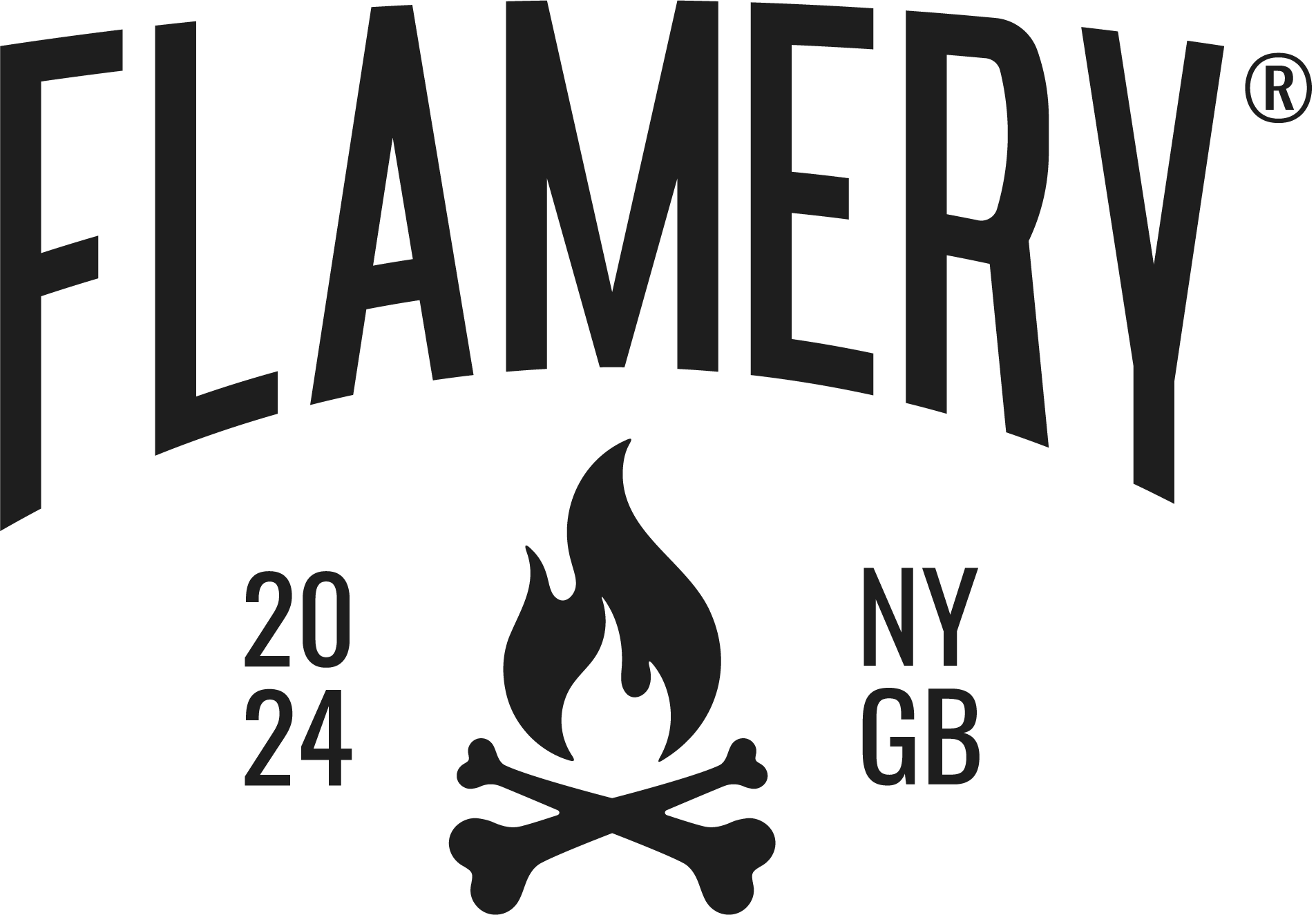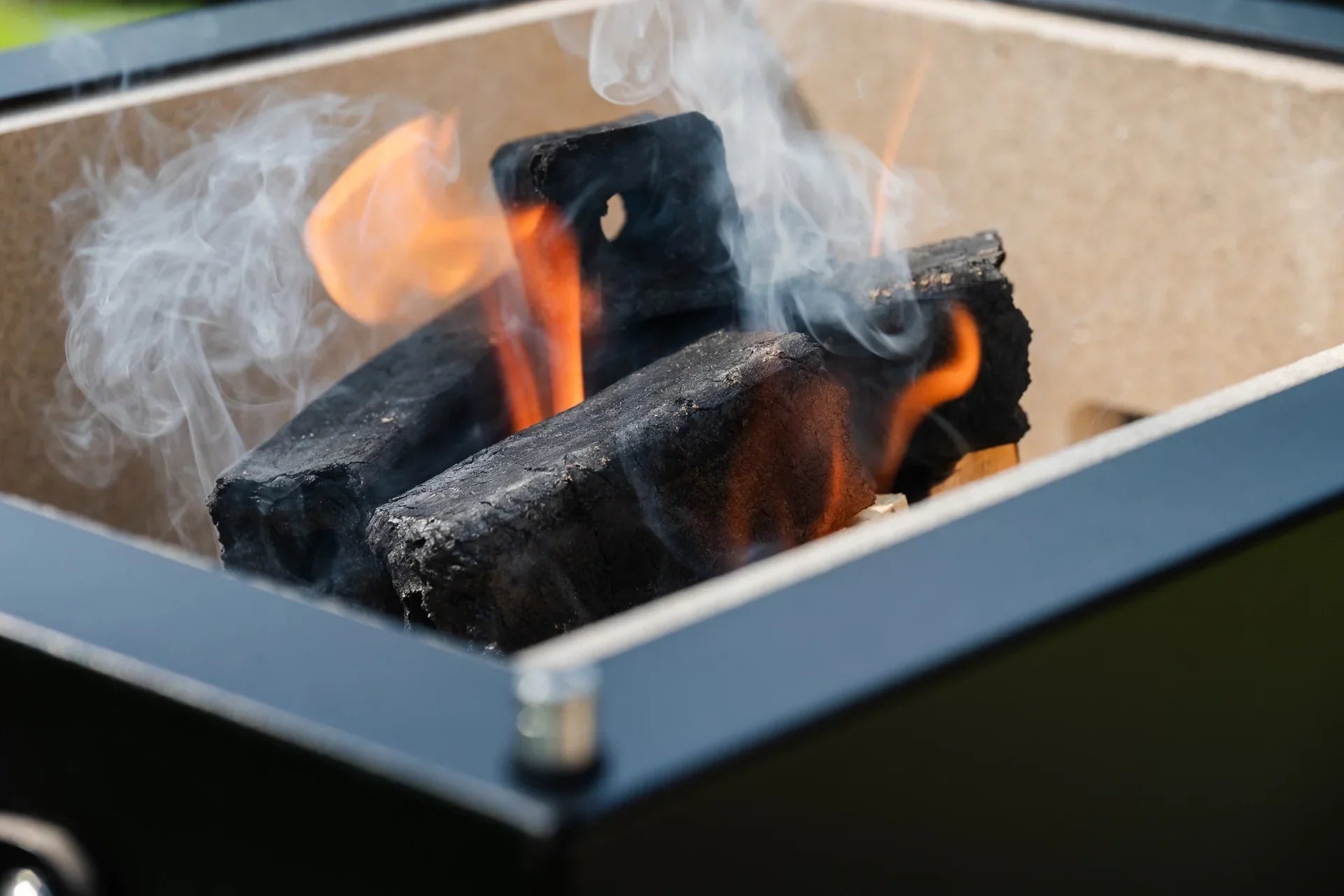When it comes to cooking with fire, fuel matters. A lot.
It shapes the burn, the heat, and — most importantly — the flavour. And while it’s tempting to think of charcoal vs. wood as a binary choice, some of the best results come from pairing them with purpose. Whether you’re grilling over a Konro or an Asado, understanding how different fuels behave can take your live-fire cooking to the next level.
Here’s how to choose the right fuel for the flavour you want.

Charcoal: Clean, Hot, and Reliable
If consistency is your priority, charcoal is the go-to.
High-quality lumpwood charcoal lights relatively quickly and gives you a steady, high heat with minimal smoke. For the Konro, we recommend Binchotan (Japanese white charcoal). It burns clean and incredibly hot, with little to no smoke or aroma—ideal when you want the flavour of the ingredient to shine without interference from the fire itself.
Best for:
- Yakitori and skewers
- Quick-searing steaks and chops
- Delicate proteins (fish, scallops, tofu)
- Controlled indoor or sheltered outdoor cooking

Wood: Richer Smoke, Deeper Character
Cooking with wood is more than just heat—it's theatre, tradition, and an extra layer of flavour.
Logs and chunks bring distinctive aromas depending on the species—oak, apple, cherry, hickory, or beech all burn differently. You’ll get visible smoke and a more expressive flavour profile, which makes wood perfect for longer cooks or meats that benefit from a slow kiss of smoke.
On the Asado, wood isn’t just fuel—it’s part of the ritual. You burn logs in the firebox and pull the embers across under the grill as needed. This gives you full control over heat while continuing to develop that unmistakable wood-fired character.
Best for:
- Slow-roasting joints (lamb shoulder, pork belly)
- Whole fish or chickens
- Flame-seared vegetables
- Cooking with drama and depth

The Hybrid: Best of Both Worlds
Many of the best cooks use a charcoal base for steady heat, then add wood for flavour.
Charcoal gives you the structure: consistent, long-burning heat that’s easy to manage. A few pieces of hardwood or fruitwood on top add bursts of smoke and complexity. This is especially effective on the Asado, where you can build a solid ember bed, then layer in smoke as needed depending on what’s on the grill.
For example, searing steaks? Charcoal alone will do the job beautifully. Cooking duck or aubergine? Add a log of cherry or oak for that subtle smoky note that takes it up a notch.
Pro tip: Let wood burn down to glowing embers before cooking directly over it. Flames are dramatic, but embers are where the flavour lives.

Know Your Fuel, Own Your Fire
There’s no one right way to fire up. It depends on what you’re cooking, how long you have, and what kind of flavour you’re chasing.
- Charcoal is clean and precise.
- Wood is expressive and immersive.
- The mix is adaptable, flavourful, and full of potential.
So next time you fire up the grill, don’t just light it—think about what you’re fuelling it with. You’ll taste the difference.



Share:
Burger Press vs Steak Press: When (and Why) to Use Them
Grilling for Two: Why the Konro Is Perfect for Small Gatherings